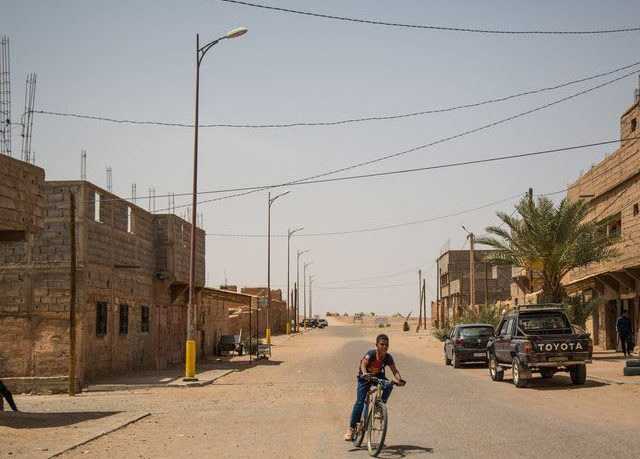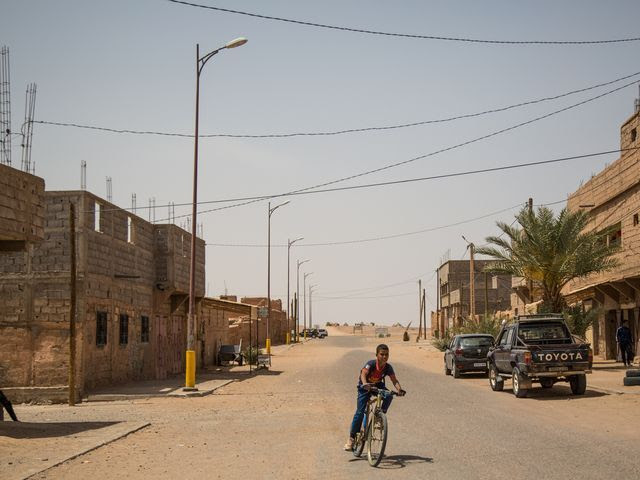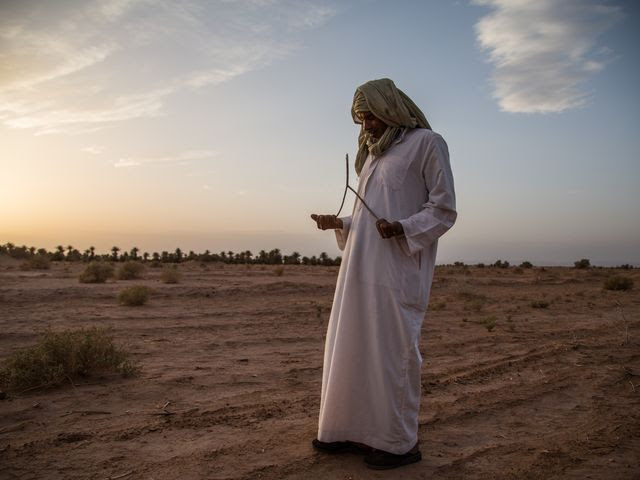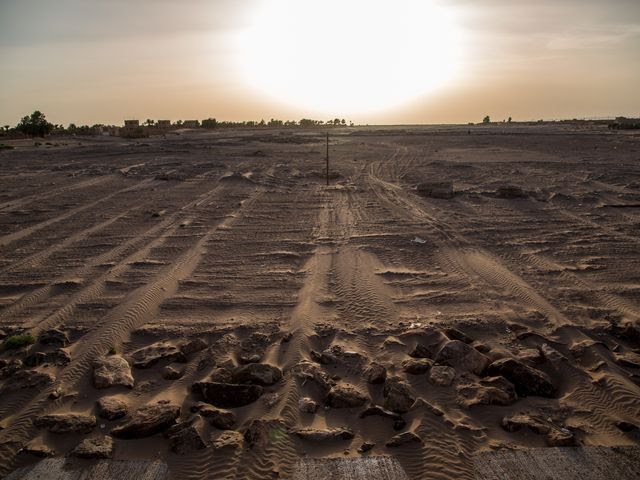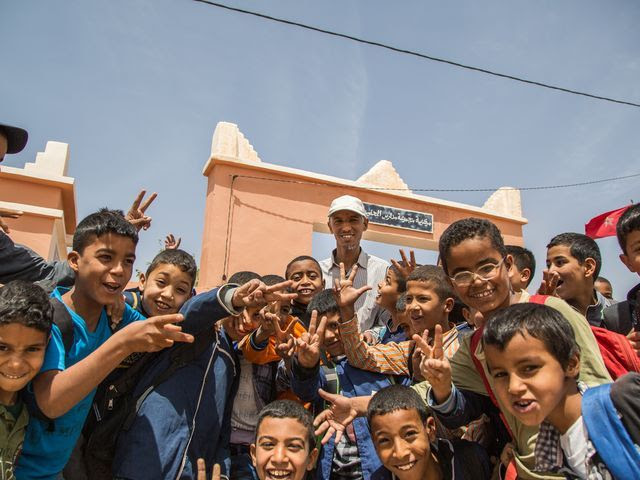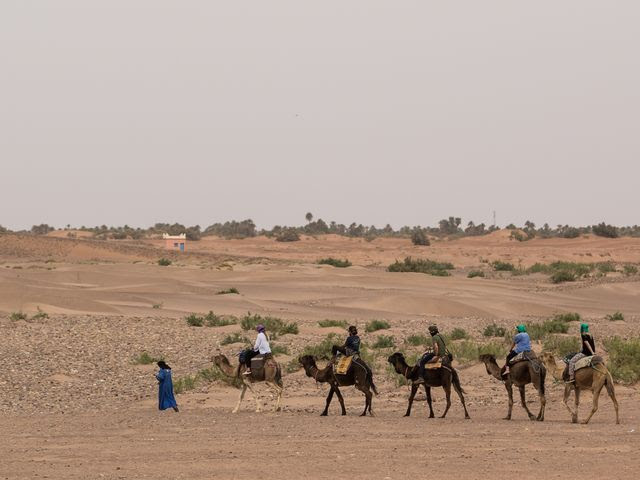USA TODAY
Perry DeMarche
photos: Mary Mathis
M’HAMID EL GHIZLANE, Morocco — For generations, they were known as “rain nomads,” herders who moved constantly along the western rim of the Sahara Desert in search of a patch of green where their goats and camels could graze.
Then the rain, never plentiful, became even more sporadic. Temperatures got hotter. A dam choked another source of precious water, the Draa River. Not even the camels could endure.
Families whose lives revolved around the seasons and the needs of their livestock, gave up and became villagers. Over the years, many settled in this oasis town whose one main street merges into the edge of the desert.
About two-thirds of Morocco’s roughly 25,000 remaining nomads live in this region about 200 miles south of Casablanca, according to a 2014 government survey. The number of nomads had fallen by 63% from the previous decade, the same survey by the Moroccan High Commission for Planning found. While there are a number of reasons for the decline, climate change is among the main causes.
Laghroumi Mohammed uses a dowsing stick to search for underground water on his family’s …more
Climate conditions created by global warming trap hot air around the Sahara, so the desert actually is expanding, said Meryem Tanarhte, a Moroccan professor who holds a doctorate in atmospheric chemistry.
Tanarhte said Morocco has seen a decrease in precipitation, increasing heat extremes and severe drought over the past 30 years. And it will worsen.
The Max Planck Institute for Chemistry predicts that temperatures in the Middle East and North Africa will increase twice as fast as the global average. Even if the overall rise in temperatures can be held below the Paris climate accord’s target of 2 degrees Celsius, the entire region is likely to become uninhabitable, the institute said in a 2016 statement.
““The river died, and it killed us with it.”” – Laghroumi Mohammed
The conditions already are too extreme for the camels and goats essential to the nomads’ lifestyle. The animals provide milk, meat and skins. They are sources of transportation and traditional medicine, and can also be sold for income.
El Gasni Hamadi, 43, said his family’s camels died because of drought, and one animal is etched in his memory when she couldn’t get up one morning. “There was no answer,” he recalled. “No one to help; nothing to do. And she just died in my arms.”
Hamadi’s family settled here decades ago, when he was 7. The family had around 100 camels in 1995. Now, they have only 10.
Mohammed Boulfrifi, 37, said his family settled in M’Hamid, a town of 7,500, when their goats became so malnourished that their ribs were visible.
The Draa River, an important source of water for M’Hamid El Ghizlane and other Moroccan desert …more
“It’s not just us,” Boulfrifi said. “Half the village came from the desert before — they were nomadic. Half. Or more than half.”
The village has not escaped the effects of climate change. Ali Daimin, a shopkeeper in M’Hamid who holds a master’s degree in history and geography, said there never were sand dunes in town.
“It was land for agriculture, for everything,” he said. “Now part is completely covered by sand. You can’t use it for anything.”
George Zittis, a post-doctoral fellow specializing in climate simulations at the Cyprus Institute’s Energy, Environment and Water Research Center, predicted temperatures on the hottest days here would exceed 120 degrees by the end of the century. That is more than 10 degrees warmer than now.
“What we consider extreme in a present climate will be normal in a likely future, unless greenhouse gases are substantially reduced,” he said.
But Tanarhte said scarcity of water will have the biggest impact because agriculture depends on precipitation. “So if it doesn’t rain, everything goes wrong,” she said.
El Gasni Hamadi, standing in back row, was born a nomad but now teaches French and Arabic at the …more
Hamadi said precipitation has always been so sporadic that there is a saying in town: If an antelope is standing in the desert when it rains, one horn gets wet while the other stays perfectly dry.
A study by German scientists estimated that by 2050 annual rainfall, which averages only a couple of inches across the region, is likely to decrease by between three-quarters of an inch and 1.6 inches.
The Draa River long served as another source of water until the Mansour Eddahbi dam was built upstream near the city of Ouarzazate in the 1970s to provide hydroelectric power and irrigation, and to control floods. The flow downriver to M’Hamid decreased, and the problem has gotten worse as the river’s sources of water in the Atlas Mountains receive less rain.
It used to be easy to find water close to the surface of the dried river, but people are now forced to dig 25 feet or more, said Boulfrifi and Laghroumi Mohammed, another former nomad. When they do find water, it is often unusable because of salinization.
Mohammed, 52, once followed the date harvest for three months each year, pitching a tent of palm leaves along the river and digging shallow wells to bring water to his family.
Now many of those date palms are stumps blanketed by sand dunes. “The river died, and it killed us with it,” Mohammed said.
Mohammed said the river used to bring water to M’Hamid if even a quarter-inch of rain fell upstream. Now, there is nothing, even if three or four times that amount falls.
Other reasons also encourage nomads to give up their lifestyle — access to education and health care, and restrictions on movement across the border between Morocco and Algeria.
Hamadi recalls the dramatic change from living with camels and goats as a nomad to sitting in a classroom. He eventually became a teacher in M’Hamid. But people like him are an exception.
Many former nomads have found work in tourism as camel trekking guides.
The Moroccan High Commission for Planning said 84% of nomads have received no formal schooling. Boulfrifi, who settled in the village when he was 20, said there are few job opportunities for people like him.
“I don’t know how to write. I don’t know how to read. I have never been to school,” he said. “What kind of work can you do?”
The answer for him and many others has been tourism. Some former nomads lead treks to campsites in the desert or to the Erg Chigaga dunes, about 30 miles west of M’Hamid. Boulfrifi helps manage a desert camp.
“There is the military or tourism. And people, they prefer to be in tourism,” he said. “The people here, they like open air and to be free.”
But they also question whether tourism is really the answer. Many think there is a lack of government attention to the issues facing M’Hamid. So some residents have started their own initiatives.
Hamadi’s family launched a cooperative making date jam to provide a steady income for former nomads. An association works with the Agriculture Ministry to provide nomads with subsidized camel food, and another group helps women sell handicrafts.
Mouloud Tanzint, 33, who was born a nomad but now holds a master’s degree in human rights issues, said governments must take a global approach to climate change. He cited examples of polar ice melting and changes in precipitation in South America.
In the meantime, many here find little reason for optimism. “With the climate, we cannot decide,” said Daimin, the shopkeeper. “It’s not in our power. But based on what’s happened, it can only get worse and worse.”
Perry DeMarche and photographer Mary Mathis attended the School of International Training (SIT) Study Abroad journalism program in Morocco, where they produced this report in association with Round Earth Media, a nonprofit organization that supports young journalists. Yassine Chaoui contributed to the story.




